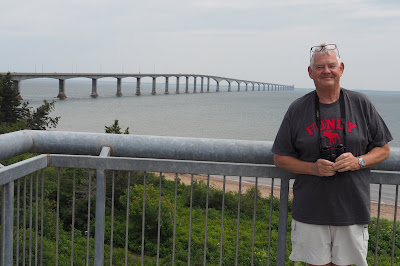As we viewed the Titanic exhibit in the Maritime Museum of the Atlantic, situated on Halifax’s attractive waterfront, an image came to mind. In the first episode of Downton Abbey, the popular fictional story of the Grantham family, Lord Grantham pales as he reads the dreadful news in his crisply ironed broadsheet. RMS Titanic, the unsinkable ship, had hit an iceberg and the heir to the Grantham fortune was lost. It’s one of life’s ironies when an event can alter the course of history and affect people seemingly unconnected with a tragedy.
The Museum’s exhibits are well done. Most poignant, the tiny shoes recovered from the floating body of “the unknown child” who eventually after three attempts was finally identified as Sidney Leslie Goodwin, an 18 month old from Wiltshire, UK, his body interred in the Fairview Lawn cemetery, one of three cemeteries used for burial of Titanic’s victims. The story of the recovery effort was remarkable with the living transported to New York City on the RMS Carpathia while the bodies of those recovered were transported to Halifax on a collection of cable laying ships. The final resting place determined by their class of travel.
The Titanic story was romanced when James Cameron visited Fairview Lawn cemetery and was inspired to choose the name of J. Dawson for his fictional character Jack Dawson, Leonardo Dicaprio’s character in his movie. However, Titanic is not the real story of the heart and soul of Halifax. A seemingly lesser known event, the Halifax explosion, is a story of tragedy and of people coming together.
 Much like the Titanic sinking, the collision between the munitions laden Mont Blanc and the Imo on 6 December 1917 was attributed to human error. The result was catastrophic, killing 2000 and injuring 9000 Haligonians. Debris from the Mont Blanc was found miles away and the Halifax community of Richmond was razed.
Much like the Titanic sinking, the collision between the munitions laden Mont Blanc and the Imo on 6 December 1917 was attributed to human error. The result was catastrophic, killing 2000 and injuring 9000 Haligonians. Debris from the Mont Blanc was found miles away and the Halifax community of Richmond was razed. The blast blew out windows for miles and set every church bell ringing.

Out of tragedy the best in humankind often manifests itself. The Boston Red Cross and the Massachusetts Public Safety Committee immediately provided assistance to Halifax residents. In 1918 Halifax sent a Christmas tree to the City of Boston which has become an annual goodwill gesture.
The Halifax Explosion Memorial Bells tower and surrounding site is one of the most touching and imaginative sites we have ever visited.
The history behind Pier 21, the gateway to Canada for new arrivals as well as the departure point for Canada’s armed forces during two world wars.
 The Nova Scotia Art Gallery’s exhibit of folk artist, Maud Lewis’s work, including her painted house, reconstructed as it originally stood, is truly endearing.
The Nova Scotia Art Gallery’s exhibit of folk artist, Maud Lewis’s work, including her painted house, reconstructed as it originally stood, is truly endearing.
The waterfront boardwalk with its whimsical drunken lamp standards and fine restaurants is another draw – The Bicycle Thief our favourite dinner haunt.

 Beyond Halifax there is lots to enjoy. The Annapolis Valley, a study in pastoral tranquility.
Beyond Halifax there is lots to enjoy. The Annapolis Valley, a study in pastoral tranquility.
Pretty communities like Wolfville abound with well kept homes, colourful gardens and manicured lawns. Wineries dot the landscape, their vineyards blanketing the gentle hillsides in perfectly spaced rows. Even a working British phone box in the middle of one vineyard!
At Grand Pre, an impressive monument tells the story of the Acadian deportation in the 1750s.
At Grand Pre, an impressive monument tells the story of the Acadian deportation in the 1750s.
Hall’s Harbour on the Bay of Fundy is a postcard in the making at low tide with fishing boats lying haplessly on the muddy harbour bottom.
South of Halifax lies the iconic Peggy’s Cove, a magnet for tourists, but time it right and you actually can get the perfect photo. The colourful, historic buildings of Lunenburg, the elegance of Mahone Bay and the well-heeled community of Chester, its gorgeous waterfront mansions overlooking millions of dollars in floating real estate.
 We came up close and personal with these fascinating, prehistoric looking creatures. The crowning glory was Roger, a 40 year old specimen weighing in at 12 pounds. He will be returned to the ocean bottom. We were glad as we were finding it hard to come to terms with plunging these fellows into boiling water.
We came up close and personal with these fascinating, prehistoric looking creatures. The crowning glory was Roger, a 40 year old specimen weighing in at 12 pounds. He will be returned to the ocean bottom. We were glad as we were finding it hard to come to terms with plunging these fellows into boiling water.
Nova Scotia is a gorgeous Province which we are only starting to discover on this adventure. Halifax and its surrounding communities had given us a great start.













































